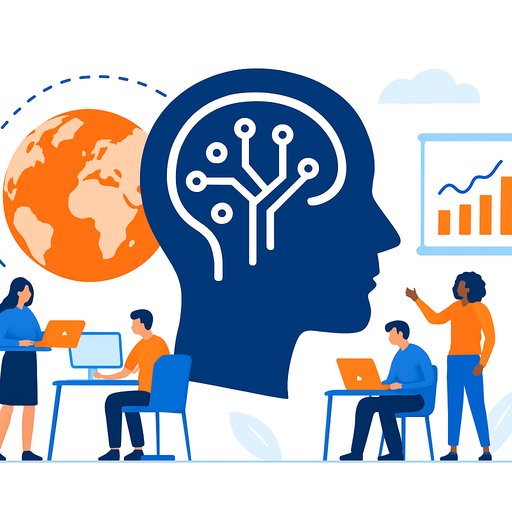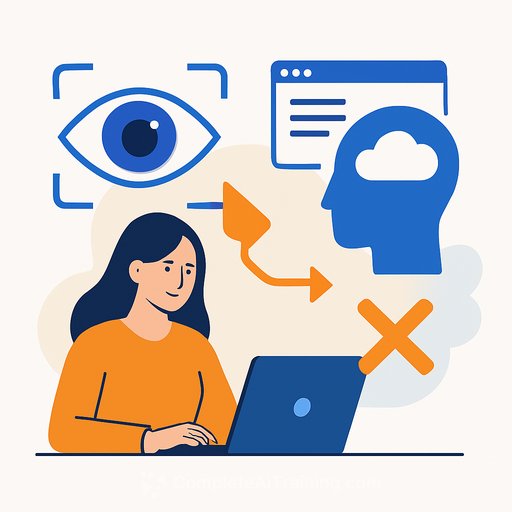Nations race to train workers for the age of artificial intelligence
Artificial intelligence is reshaping how work is done and measured. A new analysis of 50 countries shows who is preparing their people for AI-driven jobs-and who risks falling behind.
Research cited in the study suggests nearly half of today's jobs could disappear within two decades due to automation. At the same time, about 65% of current elementary students will work in roles that do not yet exist, many tied to AI.
What the 50-country study found
"AI capabilities and abilities are very important," said Lehong Shi, assistant research scientist at the University of Georgia's Mary Frances Early College of Education and author of the study. "If you want to be competitive somewhere else, it is very important to prepare employees to work with AI in the future."
Only 13 countries-mostly in Europe-have comprehensive national plans to build an AI-ready workforce. Australia and Mexico were the only non-European countries rated at that level. The United States landed in the "medium priority" group: active programs exist, but policies are less expansive than leading European peers.
How readiness was assessed
- Clarity of national goals for AI education and skills
- Defined plans for achieving those goals
- Concrete project examples
- Performance measures and KPIs
- Dedicated resources and funding
- Deadlines and accountability
Germany, France, and Finland stood out for integrating AI learning from primary school through adult reskilling. Their strong cultures of lifelong learning and government-backed retraining programs likely explain the lead.
What works: six strategies gaining traction
- AI-focused university programs and research tracks
- Early AI and technology literacy in K-12
- Structured workplace training pathways tied to AI use cases
- Work-based learning (on-the-job training, internships, apprenticeships) co-developed with industry
- Teacher development and upskilling in AI pedagogy
- Investment in digital infrastructure to support learning at scale
Over half the countries studied run programs with industry partners to equip employees with AI-related skills. Some also fund apprenticeships that blend academic learning with practical experience.
Mind the gaps
Shi's analysis found that vulnerable groups-the unemployed, older workers, and those outside major cities-rarely receive targeted support. "Some countries focus more on national security or healthcare applications of AI," she said, "but that leaves out workers who need new opportunities most."
"Soft human skills, such as creativity, collaboration and communication cannot be replaced by AI," Shi added. "And they were barely touched upon by only a few nations."
Regional patterns and risk
Wealthier countries invest more in AI research, infrastructure, and teacher training. Less developed nations struggle to keep pace, raising the risk of a split workforce: one half fluent in AI, the other left behind.
Among high-income countries, priorities still vary. Several Asian economies emphasize AI for healthcare and national security, while many European nations center education as the driver of long-term competitiveness. The study's takeaway: AI literacy should be treated as a national investment, not a short-term program.
Action guide for education leaders and HR
- Map roles by AI exposure and define the core skills each role needs (data literacy, prompt fluency, tool proficiency, oversight).
- Pair technical training with human skills: communication, problem framing, collaboration, and ethics.
- Stand up work-based learning with industry: apprenticeships, capstones, and on-the-job projects tied to measurable outcomes.
- Invest in teacher and trainer upskilling so new curricula actually translate into classroom and workplace practice.
- Prioritize inclusion: subsidize programs for unemployed and older workers; offer flexible, modular learning.
- Measure what matters: skill gain, job placement, productivity uplift, and equity of access.
- Start early: integrate age-appropriate AI literacy in primary grades and sustain it through higher education and adult learning.
Start early, sustain interest
Countries like Germany are building public interest in AI and funding adult education to make learning continuous. Spain pilots AI lessons as early as preschool to make the technology feel familiar and creative rather than intimidating.
Early exposure matters, but it's the blend-technical fluency plus human strengths-that sets people apart. That mix is how students and workers stay valuable as AI systems become more capable.
Practical next steps
- Educators: embed AI ethics, data literacy, and project-based learning across subjects; refresh assessments to reward problem-solving and teamwork.
- HR and L&D: launch role-based AI upskilling, set clear proficiency levels, and create internal mobility paths tied to new skills.
- Policy makers: fund inclusive access (devices, connectivity), expand teacher training, and incentivize employer-education partnerships.
Research findings are available in the journal Human Resource Development Review. For broader policy context, see UNESCO's guidance on AI and education here.
If you're building structured pathways by role, explore curated learning tracks: AI courses by job.
The message for individuals is clear: learn step by step, embrace practical use of AI tools, and double down on the human qualities machines lack. That is the career moat in an AI-driven labor market.
Your membership also unlocks:














